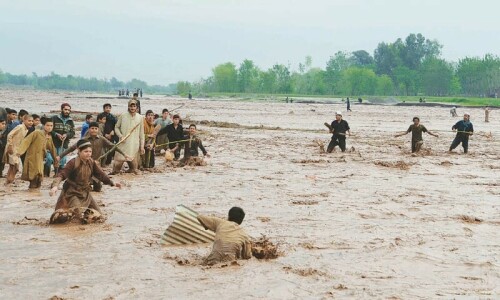BRUSSELS: The Nato military alliance on Thursday marks the 75th anniversary of the signing of its founding treaty in Washington.
Here are some facts and figures about the organisation forged in the Cold War and re-energised by Russia’s war on Ukraine.
From 12 to 32 members
Just 12 countries were founder members of the North Atlantic Treaty in 1949 as the United States, Canada and much of western Europe clubbed together to face up to the threat of former World War II ally the Soviet Union.
In 1952, often uncomfortable neighbours Turkey and Greece joined, before West Germany became a member three years later.
After the end of the Cold War, Nato went through several waves of enlargement that saw its border with Russia grow with the inclusion of Poland and the former Baltic states.
After Moscow invaded Ukraine in 2022, Nordic neighbours Sweden and Finland reversed long-standing policies of non-alignment.
9/11
Nato has only ever once triggered its Article Five collective-defence clause —which says an attack on one member is considered an attack on all — after the September 11, 2001 attacks on the United States.
The fall-out from 9/11 saw Nato get involved in Afghanistan where it remained until 2021, when a calamitous US-led withdrawal allowed the Taliban to take back power.
Two per cent of GDP
In response to Russia’s seizure of Crimea from Ukraine in 2014, Nato allies agreed they would aim to spend two percent of their GDPs on defence.
That goal was raised after Moscow launched its all-out invasion of its neighbour in 2022 to having two percent as a minimum.
France’s tenuous relationship
No country has ever withdrawn from Nato, but France spent almost 43 years outside its military command structure after then president Charles de Gaulle pulled out in 1966 complaining of US domination.
The decision — which saw Nato move its headquarters from Paris to Brussels — was only reversed by former president Nicolas Sarkozy in 2009.
Nonetheless, France’s sometimes strained relationship with Nato continues.
Published in Dawn, April 5th, 2024















































Dear visitor, the comments section is undergoing an overhaul and will return soon.